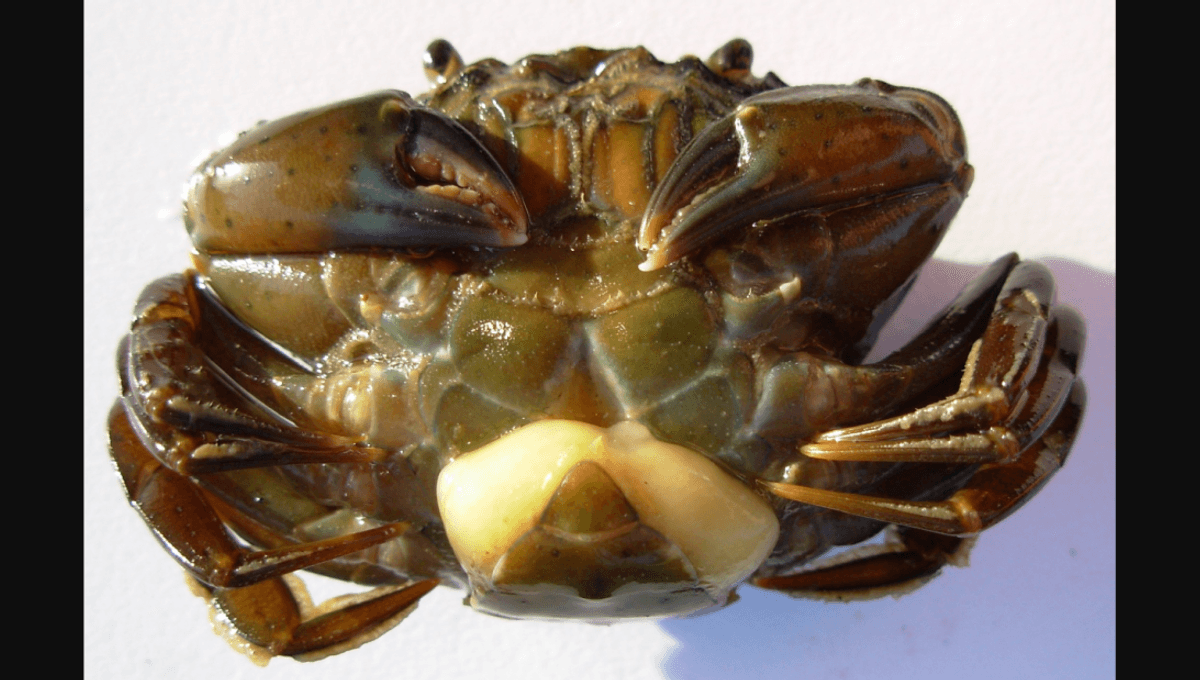
As hackers go it doesn’t get much more insidious than Sacculina carcini, the parasitic barnacle. In its adult form it’s barely recognizable as a barnacle, spending its life protruding from the underside of the crustaceans that unwillingly host it.
It’s a bit of a bum deal for the host, as once the crab hacker barnacle has taken hold, its growing days are over. For females this means staying the same size as you lovingly nurture what you’re tricked into thinking is a brood of eggs. For males, this means undergoing a transition that seems to make them look like the opposite sex.
The crab hacker mostly targets Carcinus maenas, the green crab. This invasive species gets a lot of attention in the scientific field, discovering how they can feed through their gills and, more recently, what giving them little crab sex dolls can teach us about their capacity to reproduce when there’s lots of ship noise.
Having a specific host means the crab hacker’s range pretty much mirrors that of the green crab, which was once the upper European/North African coast but now has spread across much of the globe. The crab hacker may even extend beyond its host, as the University of Michigan Museum of Zoology reports that S. carcini has been introduced in areas to control C. maenas invasions.
In its larval form the hacker crab is similar to other barnacles, but everything changes as it develops. In its earlier adult form the female looks like a microscopic slug, but once locked onto a host it swells and sprouts tendrils that help it to feed from the unfortunate crab carting it around.
The female crab hacker eventually becomes an orb of nothing much but reproductive tissue, waiting for a male to come along that is comparatively tiny and pretty much only exists to fertilize and die. A limited life, but nothing on the grotesque transformation that sees anglerfish reduced to a pair of accessory gonads.
Where the crab hacker’s real party trick comes into play is what it does to its hosts. Females are tricked into tending to the growing lump of reproductive tissue as if it is an egg sac. This same ploy obviously wouldn’t work with males that don’t carry a brood, which is probably why the crab hacker has adapted a weird workaround.
When a male crab gets parasitized by S. carcini, it undergoes endocrine changes that make it start to look and behave like a female crab. Before long, it too is lovingly tending to a gelatinous blob fused to its underside that will sap it of most of the nutrients it so painstakingly forages for.
The crab hacker: truly the Jabba The Hutt of barnacles.
Source Link: The Crab Hacker Barnacle Moves Into Crustaceans And Changes Their Sex